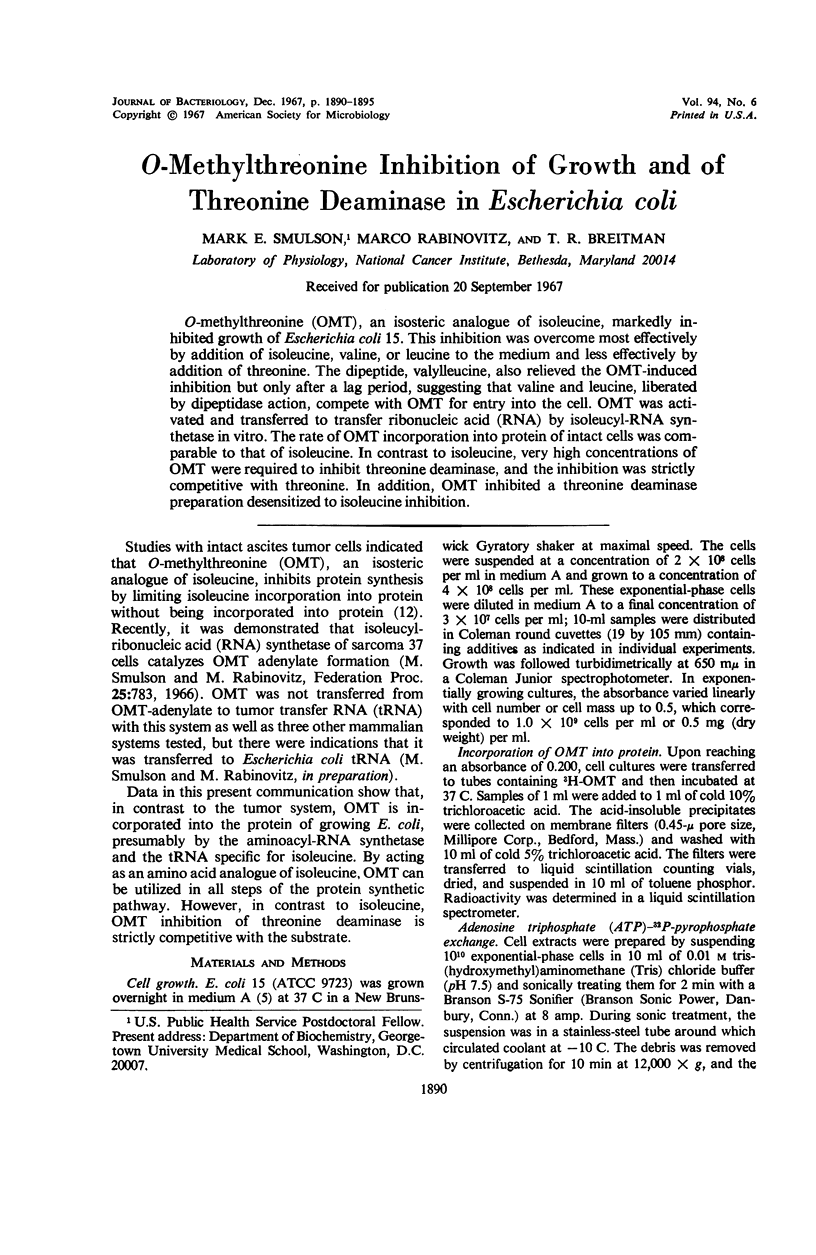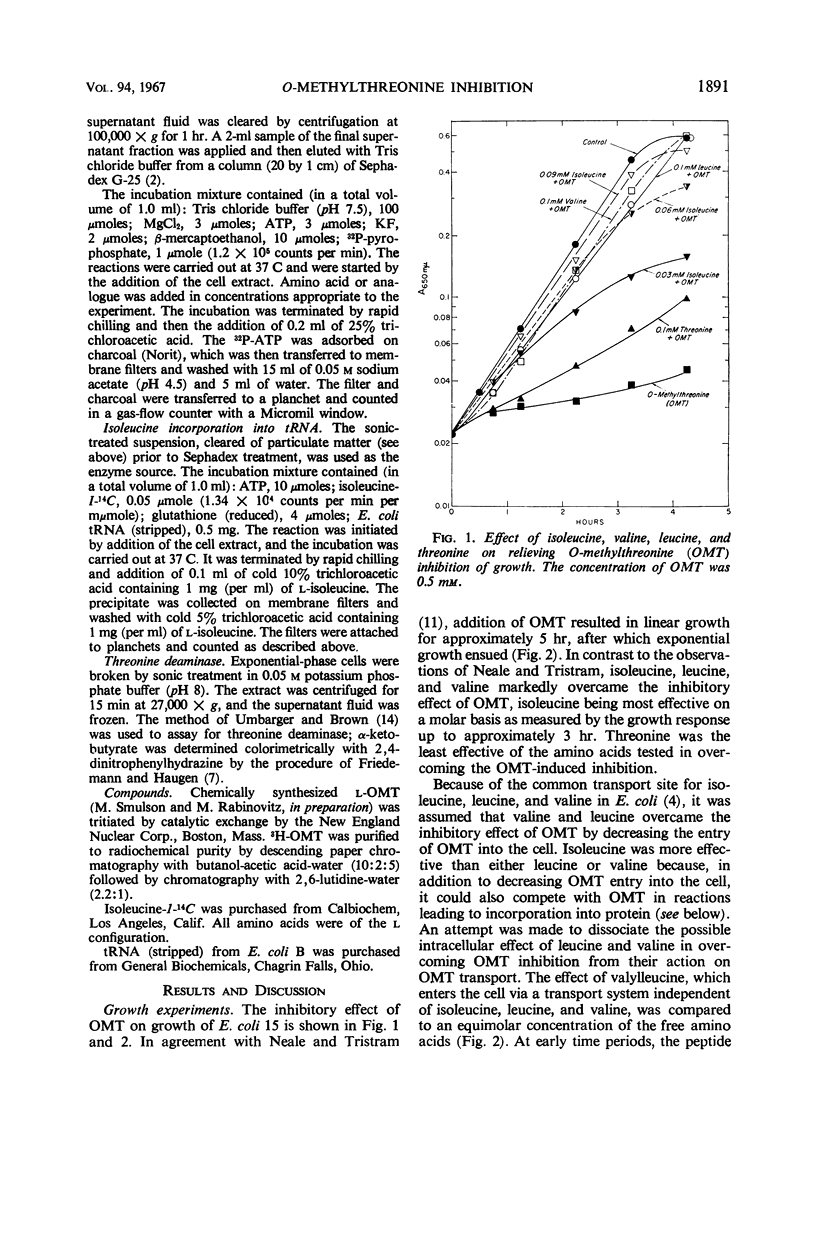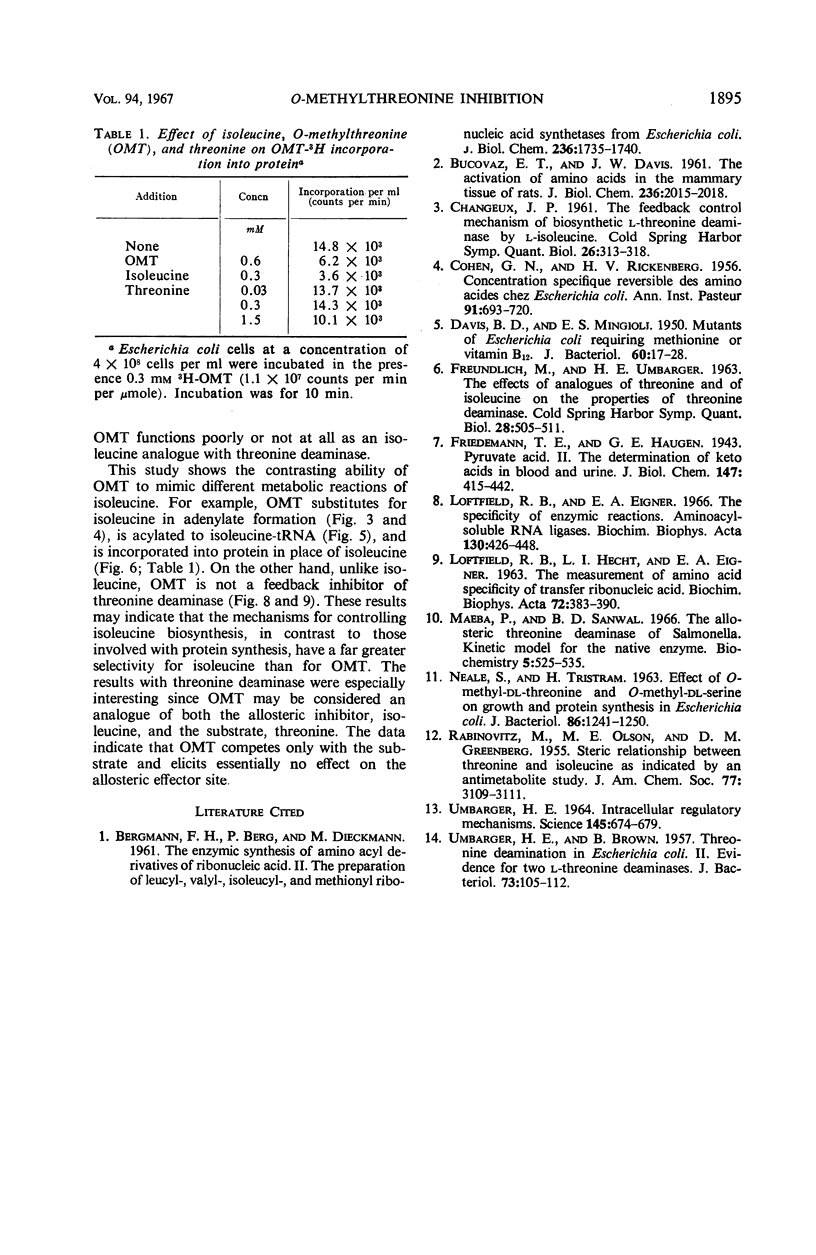Abstract
O-methylthreonine (OMT), an isosteric analogue of isoleucine, markedly inhibited growth of Escherichia coli 15. This inhibition was overcome most effectively by addition of isoleucine, valine, or leucine to the medium and less effectively by addition of threonine. The dipeptide, valylleucine, also relieved the OMT-induced inhibition but only after a lag period, suggesting that valine and leucine, liberated by dipeptidase action, compete with OMT for entry into the cell. OMT was activated and transferred to transfer ribonucleic acid (RNA) by isoleucyl-RNA synthetase in vitro. The rate of OMT incorporation into protein of intact cells was comparable to that of isoleucine. In contrast to isoleucine, very high concentrations of OMT were required to inhibit threonine deaminase, and the inhibition was strictly competitive with threonine. In addition, OMT inhibited a threonine deaminase preparation desensitized to isoleucine inhibition.
Full text
PDF





Selected References
These references are in PubMed. This may not be the complete list of references from this article.
- CHANGEUX J. P. The feedback control mechanisms of biosynthetic L-threonine deaminase by L-isoleucine. Cold Spring Harb Symp Quant Biol. 1961;26:313–318. doi: 10.1101/sqb.1961.026.01.037. [DOI] [PubMed] [Google Scholar]
- COHEN G. N., RICKENBERG H. V. Concentration spécifique réversible des amino acides chez Escherichia coli. Ann Inst Pasteur (Paris) 1956 Nov;91(5):693–720. [PubMed] [Google Scholar]
- DAVIS B. D., MINGIOLI E. S. Mutants of Escherichia coli requiring methionine or vitamin B12. J Bacteriol. 1950 Jul;60(1):17–28. doi: 10.1128/jb.60.1.17-28.1950. [DOI] [PMC free article] [PubMed] [Google Scholar]
- Loftfield R. B., Eigner E. A. The specificity of enzymic reactions. Aminoacyl-soluble RNA ligases. Biochim Biophys Acta. 1966 Dec 28;130(2):426–448. doi: 10.1016/0304-4165(66)90239-x. [DOI] [PubMed] [Google Scholar]
- Maeba P., Sanwal B. D. The allosteric threonine deaminase of Salmonella. Kinetic model for the native enzyme. Biochemistry. 1966 Feb;5(2):525–536. doi: 10.1021/bi00866a019. [DOI] [PubMed] [Google Scholar]
- NEALE S., TRISTRAM H. EFFECT OF O-METHYL-DL-THREONINE AND O-METHYL-DL-SERINE ON GROWTH AND PROTEIN SYNTHESIS IN ESCHERICHIA COLI. J Bacteriol. 1963 Dec;86:1241–1250. doi: 10.1128/jb.86.6.1241-1250.1963. [DOI] [PMC free article] [PubMed] [Google Scholar]
- UMBARGER H. E., BROWN B. Threonine deamination in Escherichia coli. II. Evidence for two L-threonine deaminases. J Bacteriol. 1957 Jan;73(1):105–112. doi: 10.1128/jb.73.1.105-112.1957. [DOI] [PMC free article] [PubMed] [Google Scholar]
- Umbarger H. E. Intracellular Regulatory Mechanisms: Regulation in multicellular forms may be an elaboration upon the pattern evolved in microorganisms. Science. 1964 Aug 14;145(3633):674–679. doi: 10.1126/science.145.3633.674. [DOI] [PubMed] [Google Scholar]


